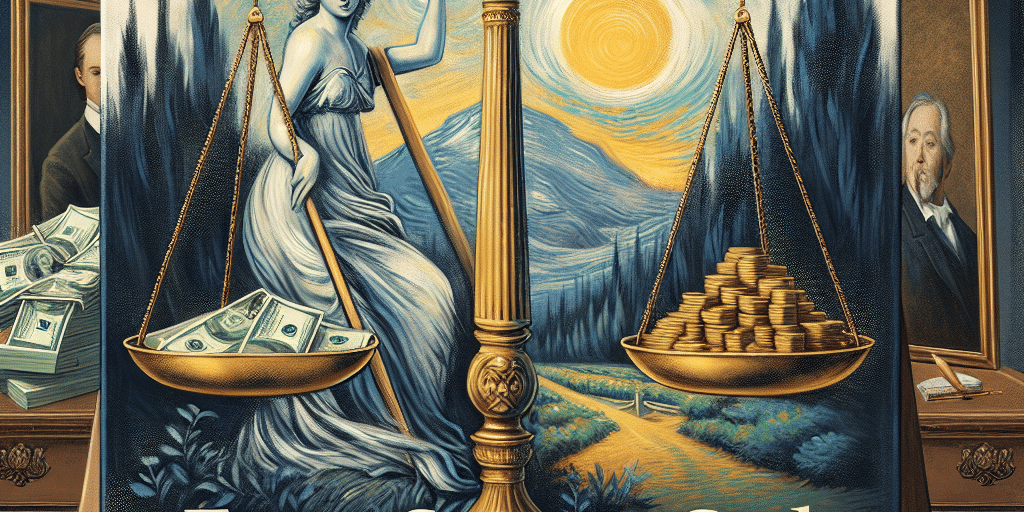Investing in art has long been considered a pursuit for the wealthy, a form of passion investment that combines the allure of aesthetics with potential financial gains. However, the landscape is evolving, making art investment more accessible to a broader range of enthusiasts and investors. If you are contemplating diversifying your portfolio beyond traditional assets like stocks and bonds, art investments could be an enticing avenue. Here are some insider tips to navigate the fascinating and sometimes perplexing world of art investments.
Understanding the Art Market
1. Know Your Types of Art:
The art market is divided into several segments – Old Masters, Impressionists, Modern art, and Contemporary art, among others. Each segment has its characteristics and market dynamics. For example, Impressionist pieces often command high prices due to their historical significance and established market demand. Conversely, Contemporary art can be more speculative but offers the potential for significant returns if you invest in emerging artists who gain recognition.
2. Recognize the Market Cycles:
Art markets tend to go through boom and bust cycles, much like other investments. Understanding these cycles can help you make informed decisions about when to buy and sell. Engaging with art market analysts and subscribing to art market reports can keep you updated on current trends.
Starting Your Investment Journey
3. Educate Yourself:
Knowledge is power when it comes to art investments. Start by visiting art galleries, museums, art fairs, and auctions. Read extensively about art history, art movements, and artists. Engaging with the art community – including curators, art critics, and fellow investors – can provide valuable insights and recommendations.
4. Set a Budget:
Determining how much you are willing to invest is crucial. The art market offers opportunities for all budget sizes, from affordable prints and photographs to multi-million-dollar masterpieces. Remember to factor in additional costs such as insurance, storage, and maintenance.
5. Consider Fractional Ownership:
For those who might not have the capital to buy entire artworks, fractional art investment platforms offer an alternative. These allow you to purchase shares in high-value art pieces, making high-end art investment more accessible.
Conducting Due Diligence
6. Verify Authenticity and Provenance:
Ensuring the authenticity of the artwork and understanding its provenance (the history of ownership) is critical. Acquiring artworks with forged provenance or dubious authenticity can lead to significant financial losses. Reputable dealers and auction houses often provide detailed provenance records and certificates of authenticity.
7. Condition Reports:
Before making a purchase, request a condition report. An artwork’s condition can profoundly impact its value – restoration, damage, or deterioration can significantly reduce its resale value.
Building a Diversified Portfolio
8. Diversify Within Art:
Diversification is a key strategy in investing, and art is no exception. Consider investing in different types of art, artists, and movements to spread risk. This might include mixing contemporary pieces with more established ones or balancing investments between paintings, sculptures, and digital art.
9. Look for Emerging Artists:
While investing in works from blue-chip artists like Picasso or Monet offers stability, emerging artists present significant growth potential. Identifying promising artists early on can yield high returns, but requires thorough research and sometimes a keen instinct.
Selling Your Art
10. Timing the Market:
Deciding when to sell is just as important as knowing when to buy. Market trends, an artist’s career developments, and economic conditions can influence the right time to sell. Stay informed through art market analytics and consult with art advisors for the best timing.
11. Choose the Right Sales Channel:
Selling art can be done through various channels – auction houses, private sales, and online marketplaces. Each has its advantages and costs. Auction houses like Sotheby’s and Christie’s are prestigious but charge substantial fees. Online platforms might offer lower fees and a wider audience but may lack the clout of established auction houses.
Conclusion
Art investment is an engaging blend of passion and profitability. With careful research, prudent buying, and strategic selling, it is possible to turn a love of art into a lucrative investment. Whether you’re drawn to the timeless charm of classical paintings or the cutting-edge appeal of digital art, the journey from canvas to cash is as much about the joy of art as it is about the returns on investment. By following these insider tips, you can navigate the art market with confidence and make informed decisions that enrich both your collection and your financial portfolio.







